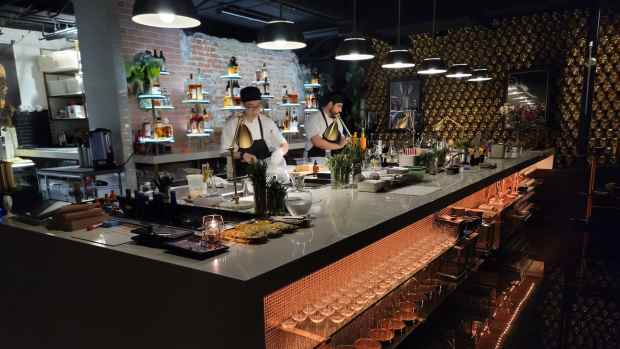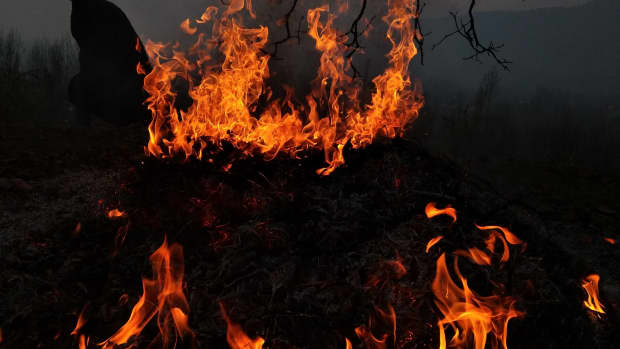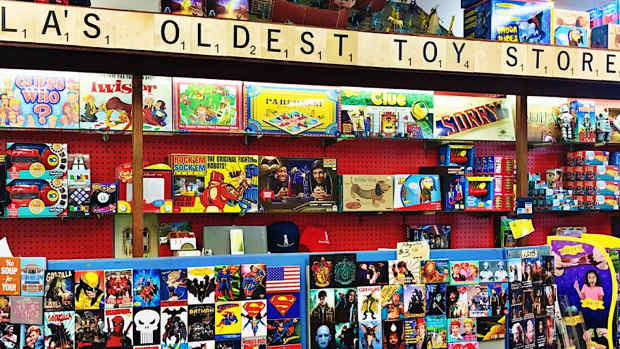Returning to the Scene of the Crime: Photos from Behind the Caution Tape
Before there were iPhones or UV cameras, crime scenes were documented on film so that investigators could study them for evidence. We did a little digging of our own and found these black and whites in the photo archives of the Los Angeles Public Library. These crime scenes cover a variety of Los Angeles sins, from a detective's murder in 1932 to the frantic search for clues in the "Night Stalker" case of 1988. Think of it as Crime Scene Images L.A.: Vintage Edition.
Infamous mobster Benjamin ‘Bugsy’ Siegal was reading a newspaper in the home of a friend in Beverly Hills when a gunman shot him through a window. He was hit in the head by two bullets. This photograph was taken on June 21, 1947. Photograph courtesy of The Los Angeles Public Library Photo Collection.
Melvin Purvis of the FBI (sporting the straw hat) and a police officer investigate a crime scene by the side of the road. The murder victim is unnamed. Photograph courtesy of The Los Angeles Public Library Photo Collection.
Detective Lieut. Hugh A. Crowley was shot to death by two bandits in the office of the Village Theater in Westwood on January 12, 1932. The suspects waited for Crowley and fired when he opened the office door. Photograph courtesy of The Los Angeles Public Library Photo Collection.
John C. Parks lies on a couch in the room where his wife and another man were stabbed to death (that’s their blood on the chair). Later that night, he was arrested and booked on suspicion of murder. This photograph was taken in March, 1959. Photograph courtesy of The Los Angeles Public Library Photo Collection.
In April, 1959 John Parks (second from right) returns to the scene of the crime during the murder investigation of his wife and her alleged boyfriend. Superior Court Judge John F shows a jury where the murders occurred in this Burbank trailer park. Photograph courtesy of The Los Angeles Public Library Photo Collection.
Gun-wielding assailants wounded Burton Fitts, a politician who had gained notoriety for taking the blame for a statutory rape committed by a real-estate millionaire. Here, police recreate the shooting in hopes of finding evidence. No arrests were ever made. Photograph courtesy of The Los Angeles Public Library Photo Collection.
Mrs. Jack Whalen hides her face from cameras after identifying the body of her slain husband in a restaurant murder scene. This photograph was taken on December 4, 1959. Photograph courtesy of The Los Angeles Public Library Photo Collection.
Sheriff's cadets search for evidence in shrubs along the York Blvd. onramp to the Glendale Freeway, hoping to find evidence in the “Night Stalker” case. Authorities on the scene stated that they found five or six pieces of "possible" evidence. Photograph by Paul Chinn. Photograph courtesy of The Los Angeles Public Library Photo Collection.
An Orange County Deputy stands near the 76 Toyota station wagon that a “Night Stalker” victim described to authorities after being brutally attacked by the serial killer in Mission Viejo. Police found fingerprints of Richard Ramirez, ending the lengthy search for the murderer’s identity. Photograph by Paul Chinn. Photograph courtesy of The Los Angeles Public Library Photo Collection.
This photo-diagram shows the scene of a shooting as viewed from Miss Lena Trontey's window and what she later claimed to have seen, included a gunman taking a victim with him. This crime took place outside Theodore Kotzin, located on East Pico. This photograph is dated August 11, 1930. Photograph courtesy of The Los Angeles Public Library Photo Collection.
Authorities presumed that the death of pregnant Mary Bucsh, whose body was discovered in a pond in her backyard, was accidental. Seven years later in 1942, her husband, Robert S. James, was convicted of using rattlesnakes to kill Bucsh before dumping her body in the water fixture. He was the last man hanged in the state of California (the gas chamber was invented shortly after). Photograph courtesy of The Los Angeles Public Library Photo Collection.
BONUS! On May 25, 1983 authors William Nolan, Jonathan Valin, Mark Schorr, Stuart Kaminsky, Elliott Lewis, Joe Hyams and Ken Girard examined the 'scene of the crime' at a book-signing party at the Wiltern Theatre. Fun fact: white chalk is never used at actual crime scenes because it would contaminate the area. Photograph courtesy of The Los Angeles Public Library Photo Collection.
































